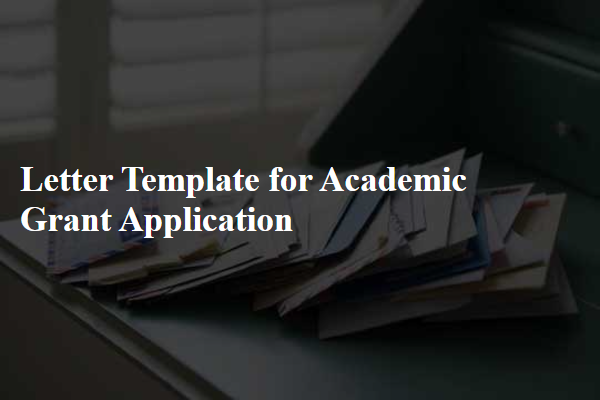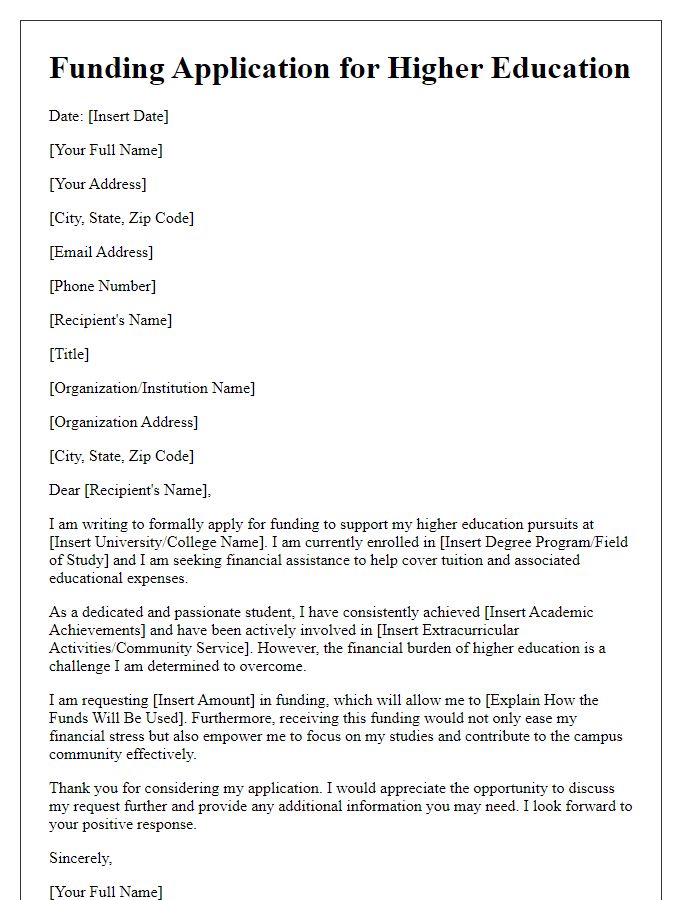Writing an effective letter for an academic grant application can feel daunting, but it doesn't have to be! The key is to clearly convey your research goals, the significance of your project, and how the grant will help you achieve your objectives. A well-structured letter not only highlights your qualifications but also demonstrates your passion and commitment to your field. Interested in mastering the art of grant writing? Read on for tips and templates that can help you create a compelling application!

Clear research objectives
Clear research objectives are paramount in any academic grant application to ensure the proposed study's direction aligns with funding goals. Specific aims must be articulated, such as investigating the effects of climate change on marine biodiversity in the Great Barrier Reef, Australia. Defining measurable outcomes is critical, such as quantifying species diversity variations over a five-year period using biodiversity indices. Objectives should include identifying key stressors, like rising ocean temperatures exceeding 1.5 degrees Celsius, and proposing conservation strategies to mitigate impacts. Ultimately, these structured goals demonstrate the research's potential contribution to scientific knowledge, policy development, and environmental sustainability.
Detailed budget breakdown
A detailed budget breakdown for an academic grant application is crucial in conveying the financial requirements and planned allocation of resources. The total budget may be segmented into various categories such as personnel costs, equipment expenditures, travel expenses, and materials/supplies. Personnel costs typically include salaries for researchers, administrative staff, and graduate assistants, which may vary based on institutional pay scales. Equipment expenditures often encompass laboratory instruments or software licenses, costing thousands of dollars depending on specifications and functionalities required for the project. Travel expenses should cover transportation, accommodation, and per diem for fieldwork or conferences, especially to locations like the American Geophysical Union meeting in San Francisco, which attracts a global audience. Lastly, materials/supplies pertain to necessary consumables, laboratory materials, or publishing costs, allowing for accurate forecasting of total financial needs, fostering transparency in the grant application process.
Relevant qualifications and experience
Relevant qualifications and experience play a crucial role in the success of an academic grant application. A candidate with a PhD in Environmental Science can highlight research conducted in regions like the Amazon Rainforest, focusing on biodiversity and deforestation rates. Previous publications in reputable journals such as "Nature" and "Ecological Applications" demonstrate a record of impactful research. Participation in conferences, such as the annual Ecological Society of America meeting in 2022, further showcases engagement with the scientific community. Skills in statistical analysis software, like R and SPSS, support strong data interpretation capabilities. Additionally, collaboration with organizations such as WWF (World Wildlife Fund) reflects a commitment to practical applications of research in conservation efforts, enhancing overall qualifications for grant funding.
Potential impact and significance
The potential impact and significance of the proposed research on climate change mitigation strategies in urban areas is substantial. This study aims to analyze the effectiveness of green infrastructure, such as permeable pavements and urban forestation, in reducing heat islands in cities like New York and Los Angeles, which experience average temperatures exceeding 30 degrees Celsius during summer months. By examining the correlation between green spaces and air quality improvement, specifically targeting the reduction of particulate matter (PM2.5) levels, this research could contribute significantly to public health initiatives. Enhanced urban planning practices derived from these findings could lead to decreased respiratory illnesses and lower heating-related mortality rates, with potential savings in healthcare costs exceeding $3 billion annually. Engaging local stakeholders, including city planners and community organizations, will ensure that results are not only disseminated but also effectively implemented in real-world scenarios, ultimately shaping sustainable cities of the future.
Alignment with funding agency goals
The alignment of a proposed research project with the goals of funding agencies, such as the National Science Foundation (NSF) and National Institutes of Health (NIH), is crucial for successful academic grant applications. NSF prioritizes innovative research that advances scientific knowledge and benefits society, with emphasis on education and workforce development in STEM (science, technology, engineering, mathematics) fields. NIH aims to promote health and well-being through biomedical research, encouraging projects that target diseases affecting public health. By clearly demonstrating how the proposed project addresses agency objectives, such as improving education methodologies or advancing medical discoveries, applicants increase their chances of securing funding. Additionally, incorporating measurable outcomes, such as publication metrics or community health improvements, can effectively illustrate alignment with the funding bodies' missions.













Comments